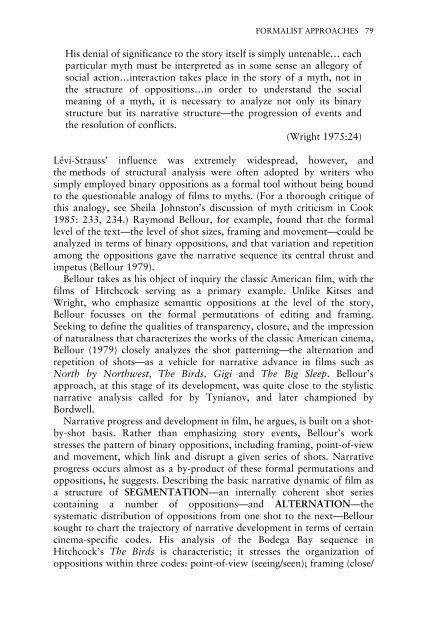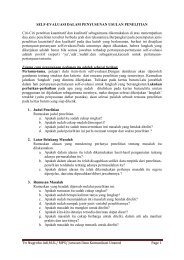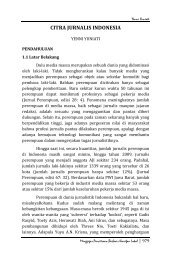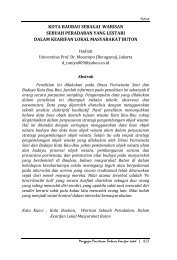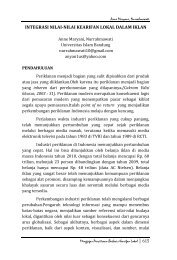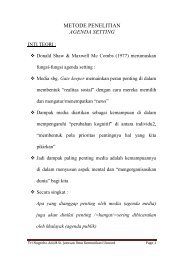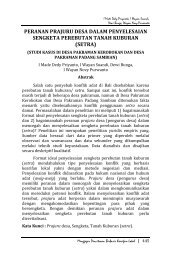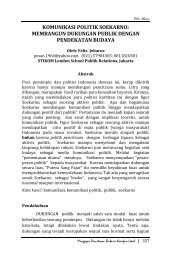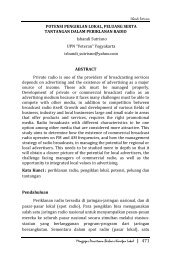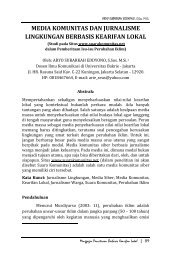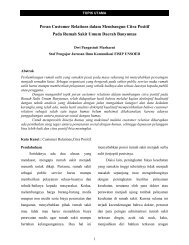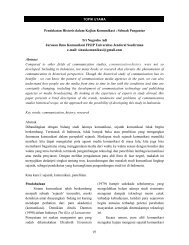New Vocabularies in Film Semiotics
New Vocabularies in Film Semiotics
New Vocabularies in Film Semiotics
Create successful ePaper yourself
Turn your PDF publications into a flip-book with our unique Google optimized e-Paper software.
FORMALIST APPROACHES 79<br />
His denial of significance to the story itself is simply untenable… each<br />
particular myth must be <strong>in</strong>terpreted as <strong>in</strong> some sense an allegory of<br />
social action…<strong>in</strong>teraction takes place <strong>in</strong> the story of a myth, not <strong>in</strong><br />
the structure of oppositions…<strong>in</strong> order to understand the social<br />
mean<strong>in</strong>g of a myth, it is necessary to analyze not only its b<strong>in</strong>ary<br />
structure but its narrative structure—the progression of events and<br />
the resolution of conflicts.<br />
(Wright 1975:24)<br />
Lévi-Strauss’ <strong>in</strong>fluence was extremely widespread, however, and<br />
the methods of structural analysis were often adopted by writers who<br />
simply employed b<strong>in</strong>ary oppositions as a formal tool without be<strong>in</strong>g bound<br />
to the questionable analogy of films to myths. (For a thorough critique of<br />
this analogy, see Sheila Johnston’s discussion of myth criticism <strong>in</strong> Cook<br />
1985: 233, 234.) Raymond Bellour, for example, found that the formal<br />
level of the text—the level of shot sizes, fram<strong>in</strong>g and movement—could be<br />
analyzed <strong>in</strong> terms of b<strong>in</strong>ary oppositions, and that variation and repetition<br />
among the oppositions gave the narrative sequence its central thrust and<br />
impetus (Bellour 1979).<br />
Bellour takes as his object of <strong>in</strong>quiry the classic American film, with the<br />
films of Hitchcock serv<strong>in</strong>g as a primary example. Unlike Kitses and<br />
Wright, who emphasize semantic oppositions at the level of the story,<br />
Bellour focusses on the formal permutations of edit<strong>in</strong>g and fram<strong>in</strong>g.<br />
Seek<strong>in</strong>g to def<strong>in</strong>e the qualities of transparency, closure, and the impression<br />
of naturalness that characterizes the works of the classic American c<strong>in</strong>ema,<br />
Bellour (1979) closely analyzes the shot pattern<strong>in</strong>g—the alternation and<br />
repetition of shots—as a vehicle for narrative advance <strong>in</strong> films such as<br />
North by Northwest, The Birds, Gigi and The Big Sleep. Bellour’s<br />
approach, at this stage of its development, was quite close to the stylistic<br />
narrative analysis called for by Tynianov, and later championed by<br />
Bordwell.<br />
Narrative progress and development <strong>in</strong> film, he argues, is built on a shotby-shot<br />
basis. Rather than emphasiz<strong>in</strong>g story events, Bellour’s work<br />
stresses the pattern of b<strong>in</strong>ary oppositions, <strong>in</strong>clud<strong>in</strong>g fram<strong>in</strong>g, po<strong>in</strong>t-of-view<br />
and movement, which l<strong>in</strong>k and disrupt a given series of shots. Narrative<br />
progress occurs almost as a by-product of these formal permutations and<br />
oppositions, he suggests. Describ<strong>in</strong>g the basic narrative dynamic of film as<br />
a structure of SEGMENTATION—an <strong>in</strong>ternally coherent shot series<br />
conta<strong>in</strong><strong>in</strong>g a number of oppositions—and ALTERNATION—the<br />
systematic distribution of oppositions from one shot to the next—Bellour<br />
sought to chart the trajectory of narrative development <strong>in</strong> terms of certa<strong>in</strong><br />
c<strong>in</strong>ema-specific codes. His analysis of the Bodega Bay sequence <strong>in</strong><br />
Hitchcock’s The Birds is characteristic; it stresses the organization of<br />
oppositions with<strong>in</strong> three codes: po<strong>in</strong>t-of-view (see<strong>in</strong>g/seen); fram<strong>in</strong>g (close/


